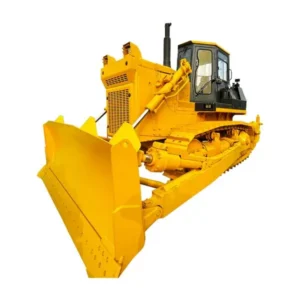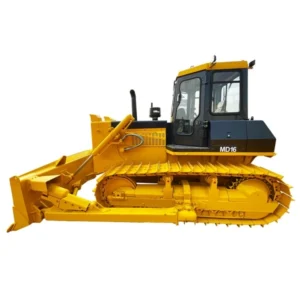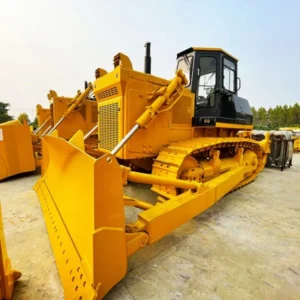Welcome to My Blog!
Before we dive into the content, I’d love for you to join me on my social media platforms where I share more insights, engage with the community, and post updates. Here’s how you can connect with me:
Facebook:https://www.facebook.com/profile.php?id=100066759548969
Now, let’s get started on our journey together. I hope you find the content here insightful, engaging, and valuable.
Introduction
Trail building and maintenance require specialized equipment, and one of the most essential machines for these tasks is the trail dozer. These machines are designed to handle rough terrain, clear vegetation, and shape trails efficiently. Choosing the right trail dozer for your project can significantly impact the speed, quality, and safety of your work. This guide will help you navigate the key factors to consider when selecting a trail dozer, ensuring you make the best choice for your specific needs.
Why the Right Trail Dozer Matters

Selecting the correct trail dozer is critical for ensuring the success of your project. Different trail dozers are suited for different terrains, job sizes, and environmental conditions. Choosing the wrong machine can lead to inefficiencies, higher costs, and potential damage to the environment. Understanding the key features and specifications will help you pick the best machine to complete your job efficiently and safely.
Terrain and Environment
The type of terrain you’ll be working on is one of the most important factors to consider when choosing a trail dozer. Rocky, mountainous, or heavily wooded areas require machines with more power and advanced maneuverability, while flatter terrains may not need such heavy-duty equipment.
Assessing Your Project’s Terrain
- Rocky Terrain: Requires a dozer with strong tracks and high ground clearance to navigate rocks and uneven surfaces.
- Muddy or Soft Ground: Look for a trail dozer with wide tracks to distribute weight evenly and prevent sinking.
- Dense Vegetation: A machine with powerful clearing capabilities and front blades designed for cutting through thick brush will be ideal.
Dozer Size and Power
Trail dozers come in various sizes and power outputs. Selecting the right size depends on the scale of your project, the amount of material you need to move, and the type of trails you are building. Larger dozers can handle more demanding tasks but may not be suitable for narrow trails or tight spaces.
Choosing the Right Power and Size
- Small to Medium Projects: For smaller, tighter trails or landscaping projects, a compact trail dozer is often sufficient.
- Large Projects: If you’re working on larger trail systems or need to move significant amounts of earth, a more powerful, larger dozer is required.
Key Features to Look for in a Trail Dozer
When choosing a trail dozer, certain features will determine the machine’s overall performance and suitability for your job. Below are the key features you should prioritize.
Blade Types and Functions
The blade is one of the most critical components of a trail dozer, as it determines how efficiently you can move soil, debris, and vegetation. There are several types of blades, each designed for specific tasks.
Common Blade Types for Trail Dozers
- Straight Blade (S-Blade): Best for pushing soil and debris.
- Angle Blade (A-Blade): Allows for angled cuts, useful for shaping trails and creating slopes.
- U-Blade: Larger and more curved, ideal for moving large amounts of material over long distances.
Hydraulic Performance
Hydraulics are responsible for powering the blade and other attachments on a trail dozer. A strong hydraulic system ensures smooth and efficient operation, especially when clearing dense vegetation or moving large amounts of earth.
Hydraulic Flow and Control
- Variable Flow Control: Enables better control over blade speed and movement.
- High Hydraulic Power: Necessary for handling heavy-duty attachments and moving dense material.
Operator Comfort and Control
Trail dozing can be a long, labor-intensive task, so operator comfort is essential. Modern trail dozers are equipped with advanced ergonomic designs, intuitive controls, and even climate control options to keep the operator comfortable during long workdays.
Key Comfort Features
- Ergonomic Seat: Provides lumbar support and reduces operator fatigue.
- User-Friendly Controls: Ensure that even novice operators can use the machine effectively.
- Climate-Controlled Cab: Useful for maintaining comfort in extreme weather conditions.
Fuel Efficiency and Operating Costs
Fuel efficiency is another critical factor to consider. While more powerful machines might offer better performance, they also tend to consume more fuel. Balancing power with fuel efficiency can help keep operational costs manageable.
Reducing Operating Costs
- Fuel-Efficient Engines: Newer models often come with engines designed to minimize fuel consumption without sacrificing power.
- Maintenance Requirements: Choose a model that offers easy maintenance to reduce downtime and costs associated with repairs.
Comparison of Popular Trail Dozer Models
Below is a comparison table of popular trail dozer models, showcasing their power, blade types, and suitability for different terrains. This will help you understand which model might be the best fit for your project.
| Model | Power (HP) | Best Terrain | Fuel Efficiency |
|---|---|---|---|
| Caterpillar D3K2 | 80 | Rocky, uneven terrain | High |
| Maxpower MD22 | 220 | Earth and stone buildings, soft ground, muddy | High |
| Komatsu D39PX | 105 | Mixed terrain, forestry | High |
| CASE 650M | 74 | Flat, open terrain | Moderate |
| Trail Dozer Pro 3.5 | 60 | Tight spaces, rocky | High |
This comparison highlights the capabilities of different trail dozer models, helping you evaluate which machine is best suited for your specific job requirements.
Consider Attachments for Greater Versatility

A trail dozer’s versatility can be enhanced by using various attachments. Attachments allow you to customize the machine for different tasks, making it adaptable to various project needs.
Popular Attachments for Trail Dozers
- Rippers: Used for breaking up hard ground and rocky surfaces.
- Winches: Ideal for pulling downed trees or clearing large obstacles from trails.
- Mulchers: Help in clearing dense vegetation and brush efficiently.
Conclusion
Choosing the right trail dozer for your project is crucial for ensuring efficiency, safety, and cost-effectiveness. By considering factors like terrain, dozer size, power, hydraulic performance, and operator comfort, you can find a machine that meets your specific needs. Whether you’re working on a large-scale trail system or a smaller, more intricate project, selecting the appropriate trail dozer will make a significant difference in your project’s success.
FAQ
What size trail dozer is best for tight spaces?
For tight spaces and narrow trails, a compact trail dozer with high maneuverability and a zero tail swing design is ideal. These machines offer the power needed for trail building without taking up too much space.
How do I determine the right blade type for my project?
The blade type depends on the task at hand. For general earth-moving and clearing tasks, a straight blade works well. If you need to create slopes or shape the trail, an angle blade is a better choice.
Are trail dozers fuel-efficient?
Many modern trail dozers are designed with fuel-efficient engines. Opting for a machine with a balance of power and fuel efficiency can help you manage operating costs while maintaining performance.
What attachments are useful for trail dozing?
Common attachments include rippers for breaking hard ground, mulchers for clearing vegetation, and winches for pulling large objects. These attachments increase the versatility of your trail dozer.
How do hydraulic systems impact trail dozer performance?
A strong hydraulic system ensures efficient operation of the blade and other attachments. Machines with high hydraulic power can handle heavier loads and tougher terrain more easily.
What operator comfort features should I look for in a trail dozer?
Look for features like an ergonomic seat, user-friendly controls, and a climate-controlled cab. These features help reduce operator fatigue and make long workdays more comfortable.
Can I use a trail dozer for multiple types of terrain?
Yes, many dozers are designed to handle a variety of terrains, from rocky surfaces to soft ground. Check the specifications of the model to ensure it meets the demands of your project’s terrain.
How much power do I need in a dozer?
The power required depends on the scale of your project. Smaller trails may only need 60-80 horsepower, while larger projects could require 100 horsepower or more.
How often does a dozer need maintenance?
Trail dozers should undergo regular maintenance to ensure optimal performance. Following the manufacturer’s guidelines for maintenance intervals will help prevent costly repairs and downtime.
What is the best way to transport a dozer?
Transporting a trail dozer usually requires a flatbed trailer and adherence to local regulations for moving heavy machinery. Compact models are easier to transport due to their smaller size and weight.








-150x150.webp)
